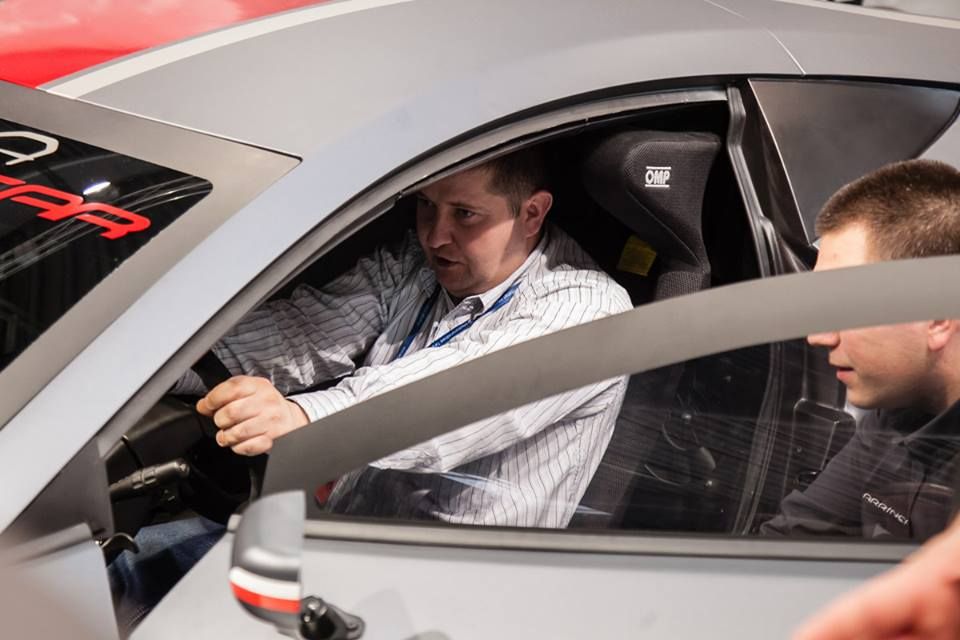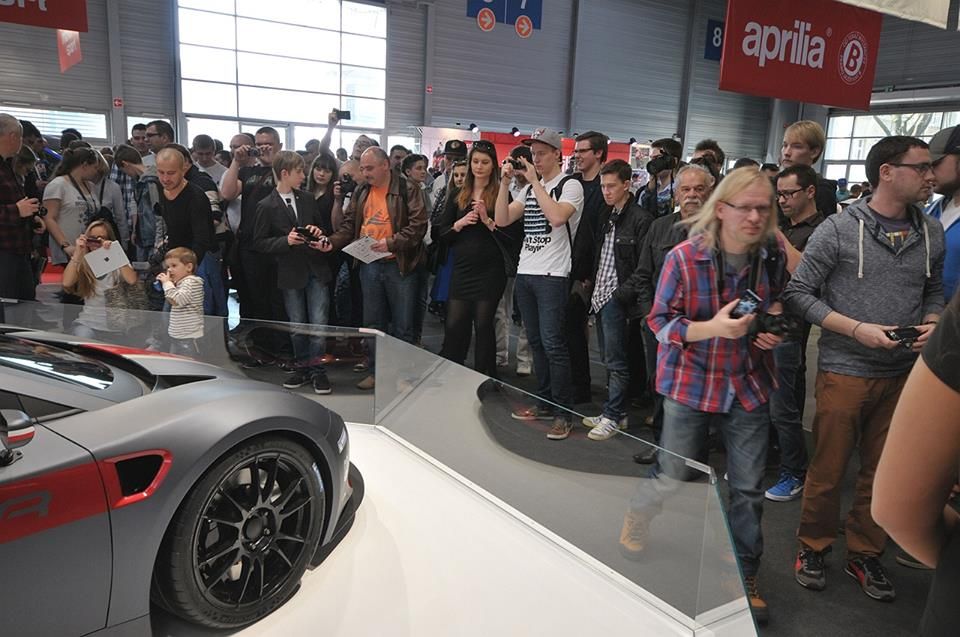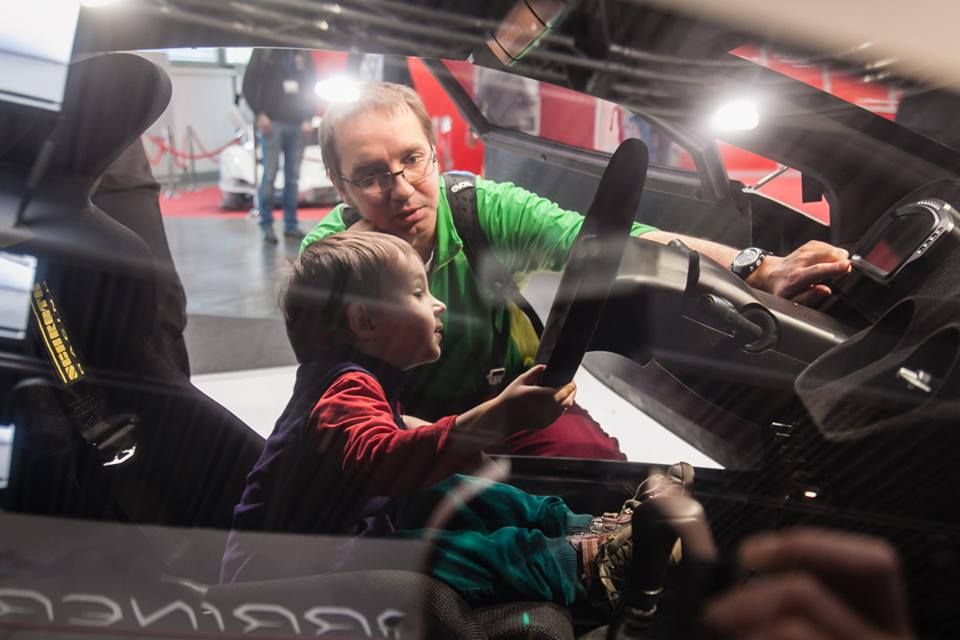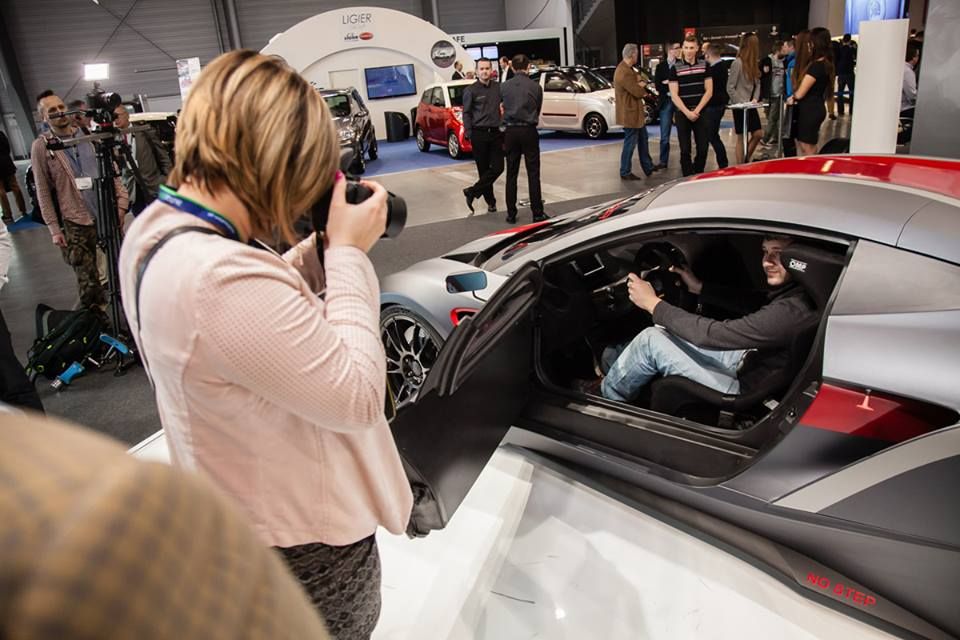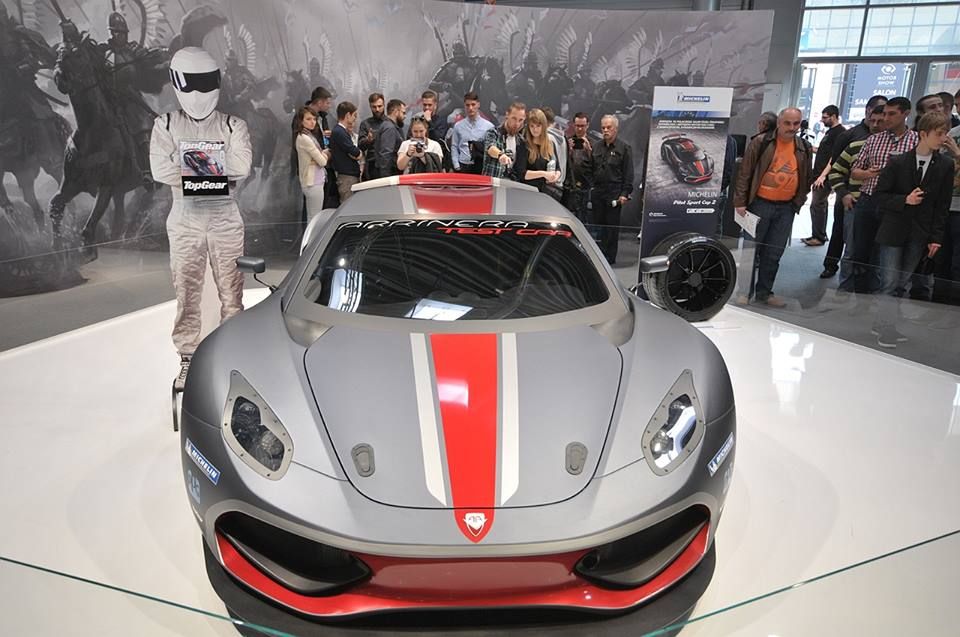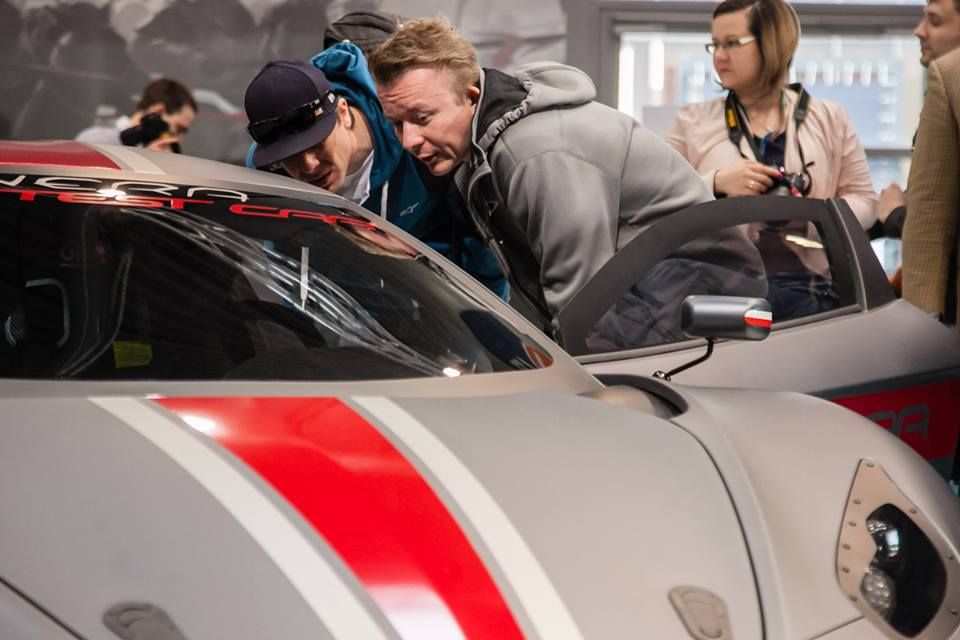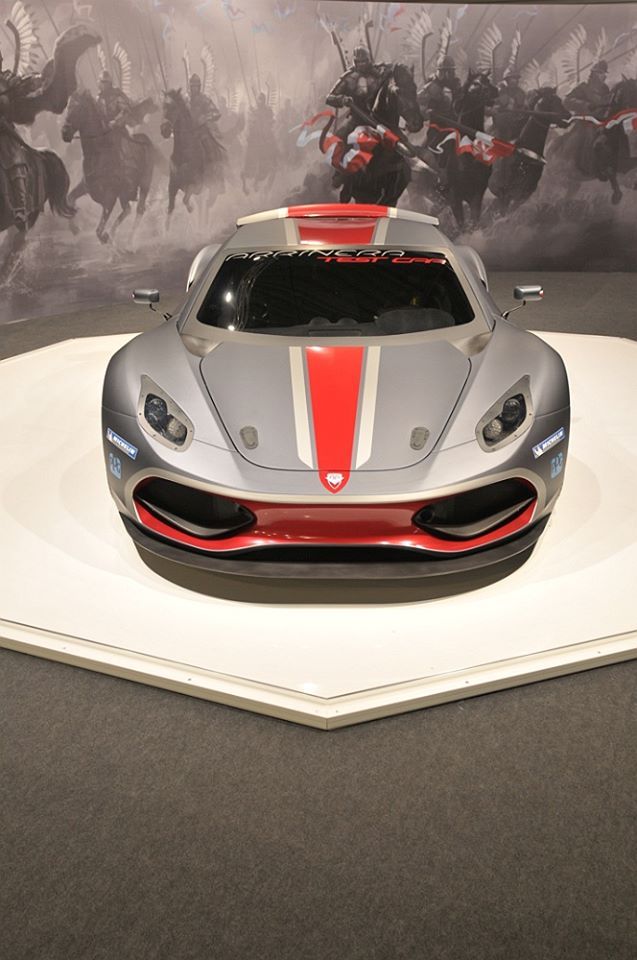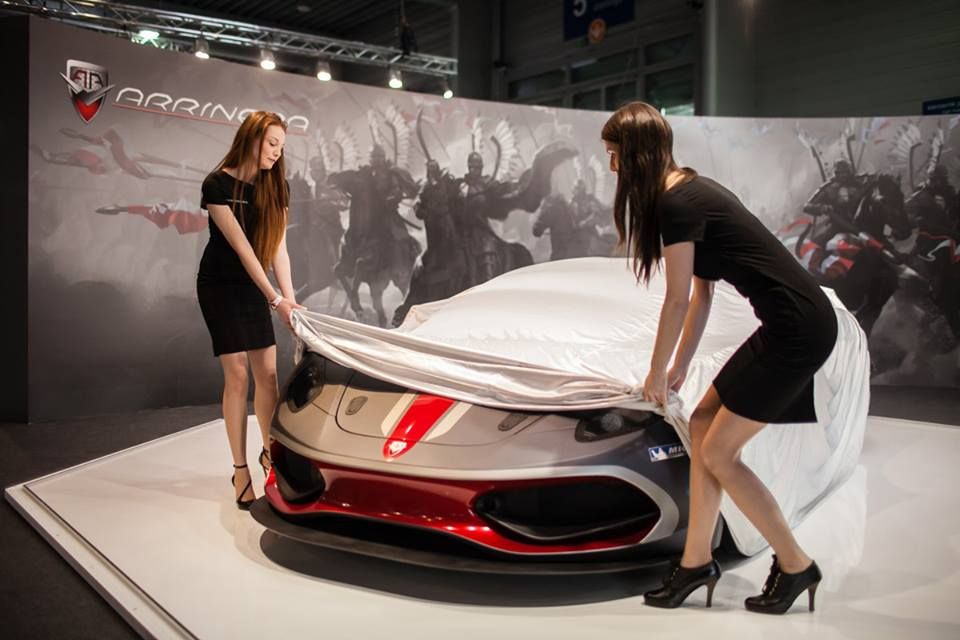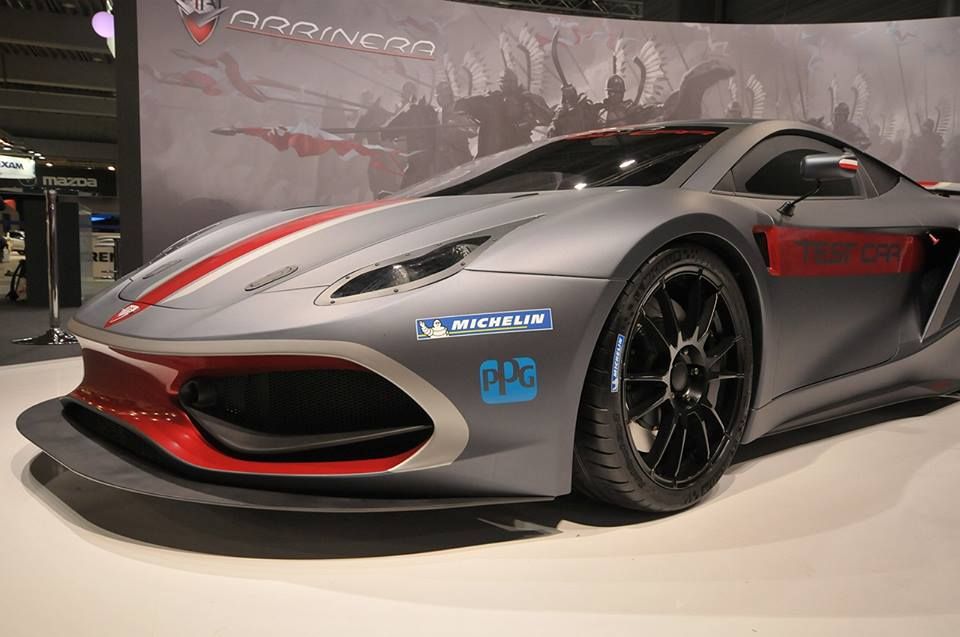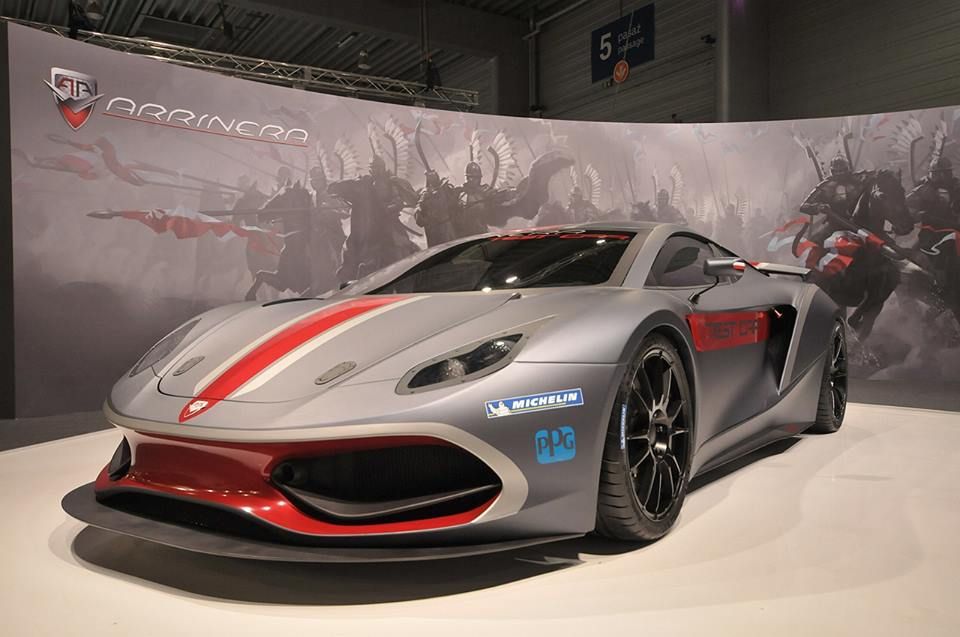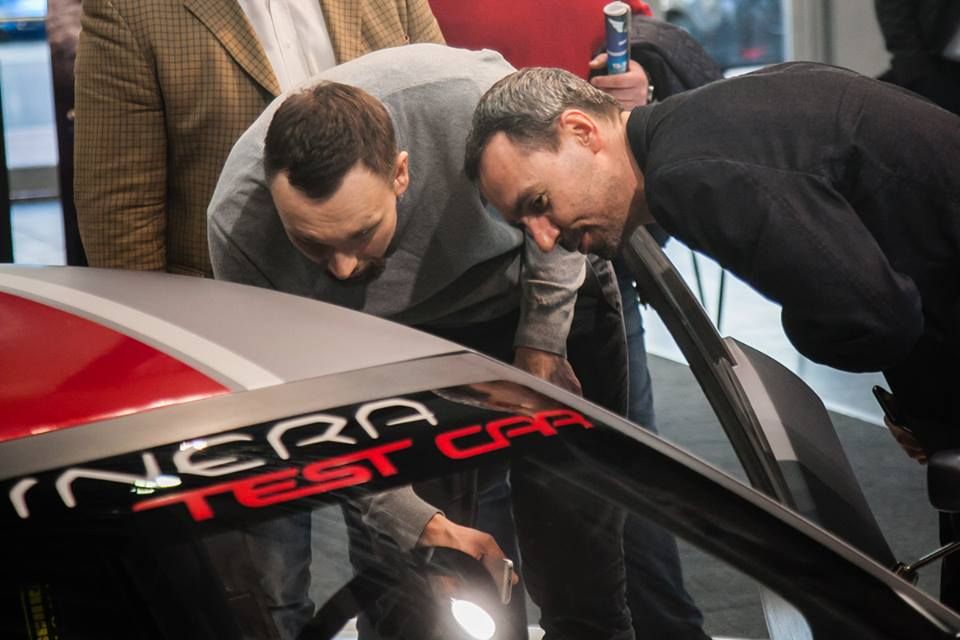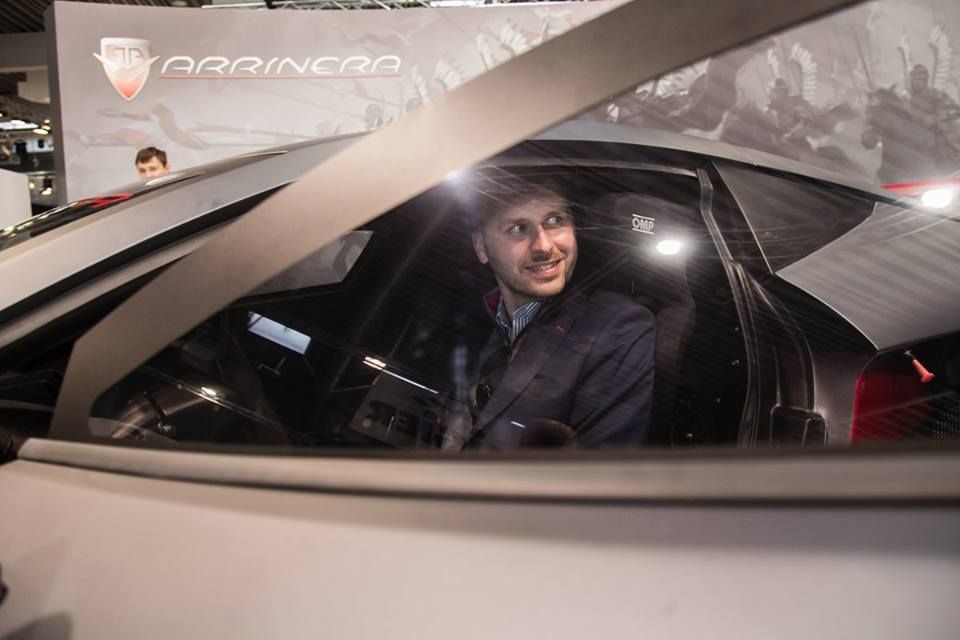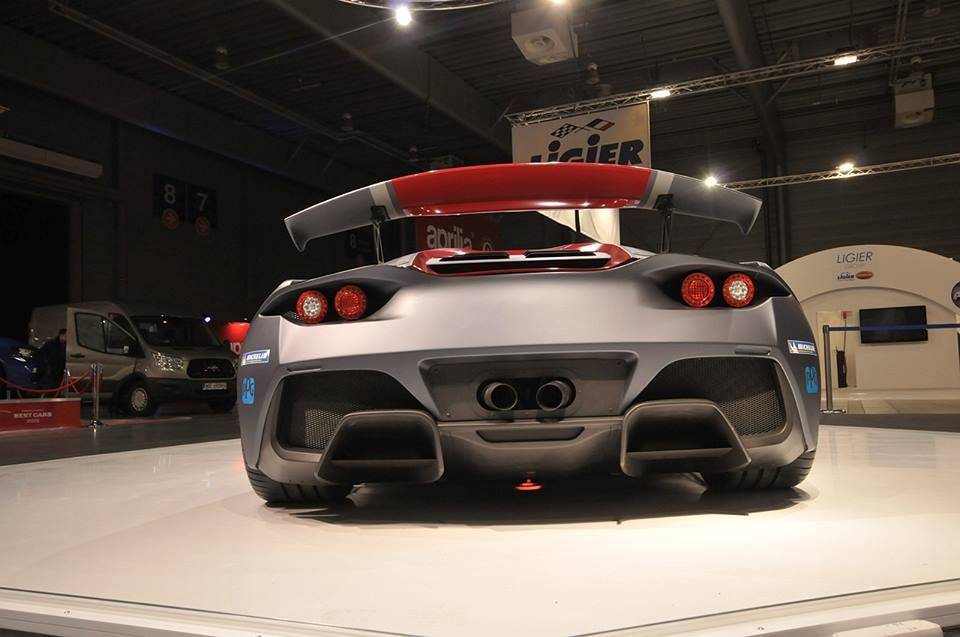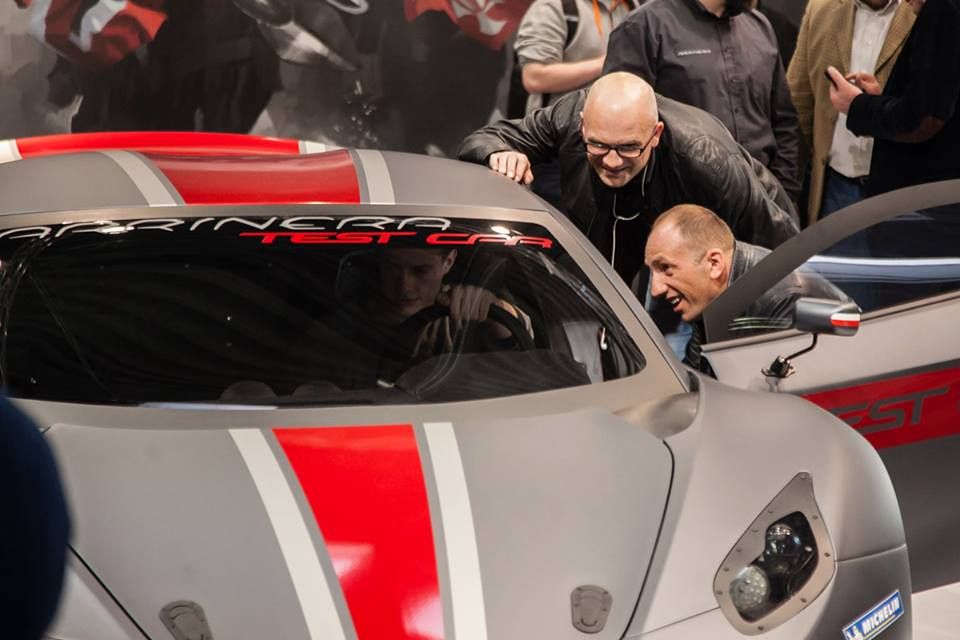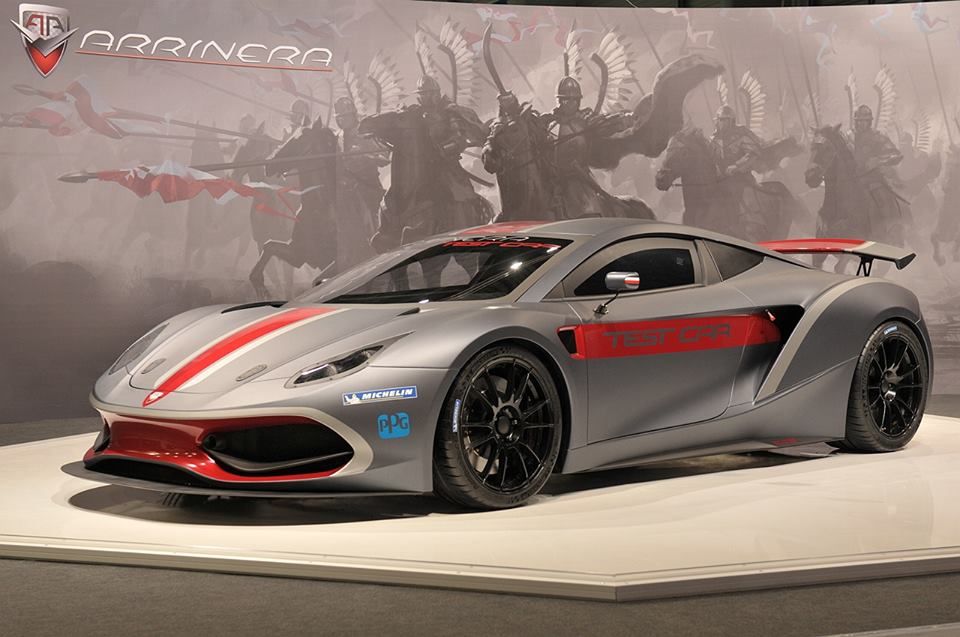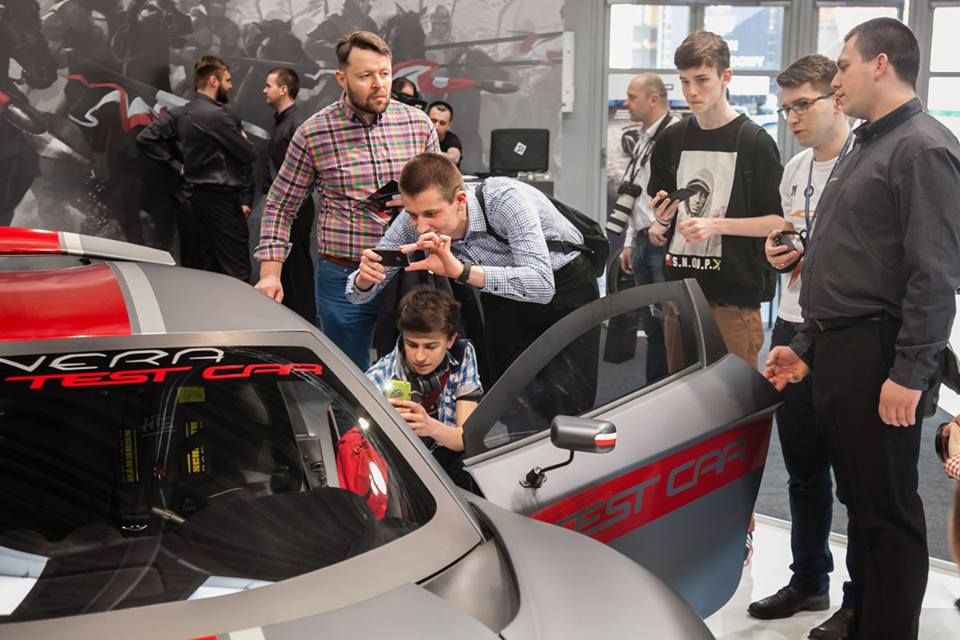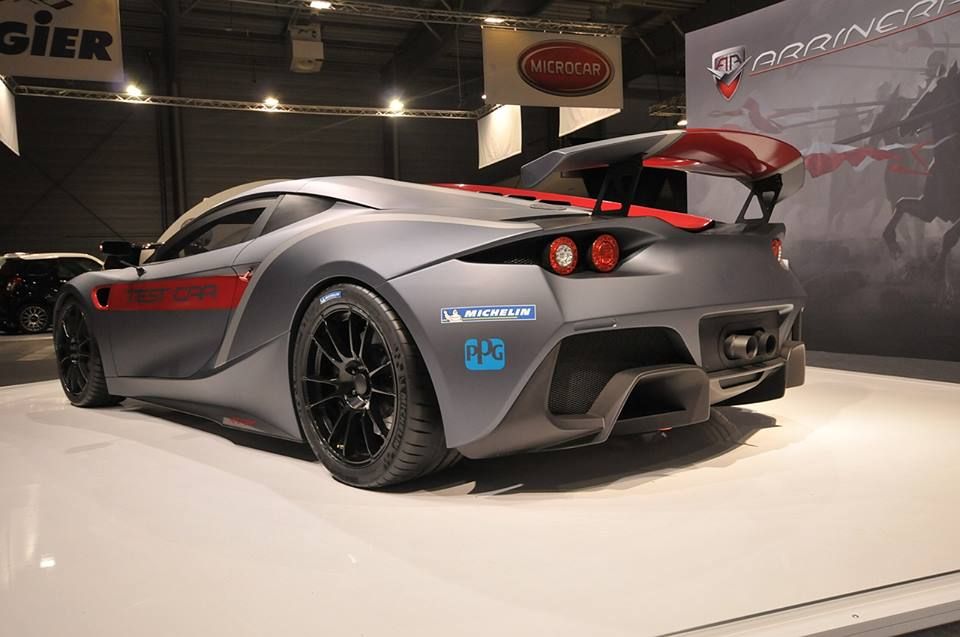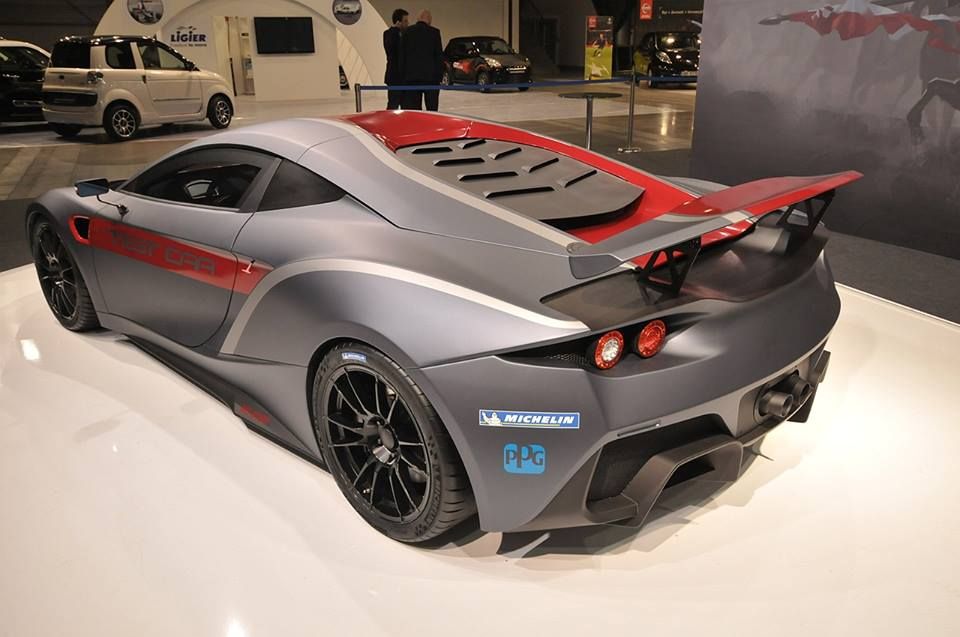Polish newcomer Arrinera->ke3963 has been teasing us with its first supercar->ke177 since 2011. At first showcased as the Venocara Concept, it then morphed into the Hussarya, a name that pays tribute to Poland’s 17th century cavalry, the Hussars. Originally set to launch in 2013, the Hussarya->ke4452 has been postponed several times, while being shown with various upgrades. Now, as Arrinera said it will finally commence production in 2016, the Hussarya receives a racing->ke447 version, which was showcased at the Poznan Auto Show in Poland.
Details about the race-spec Hussarya are still being kept under wraps, but it seems Arrinera plans to launch it before the much-anticipated road-legal model, which needed additional development. Last time we checked, Arrinera promised that the first units of the Hussarya 33 would show up in 2015, but these plans have since changed. Details on both the road car and the race-spec versions are still sketchy, and it seems that the final testing sessions scheduled in October 2014 might not have worked as planned.
I'll be back with an update as soon as the Polish firm releases them. Meanwhile. let's have a look at what may become Poland's first track-exclusive supercar.
Continue reading to learn more about the Arrinera Hussarya Race Car.
2016 Arrinera Hussarya Race Car
- Make: Array
- Model: 2016 Arrinera Hussarya Race Car
- Engine/Motor: V8
- Horsepower: 650
- Torque: 604
- Transmission: automated-manual
Exterior
While the overall shape and most of the features are identical to the Hussarya 33, a significant number of body panels and details have been redesigned with racing in mind. Up front there's a new bumper with a massive splitter, redesigned headlamps, and a new hood with race-spec pins. Differences continue on the sides, with beefier side skirts, aerodynamically optimized mirrors, and lightweight, race-spec wheels wrapped in Michelin tires. Around back, the most notable changes include a fixed rear wing, a big diffuser, and a center-mounted exhaust. The engine lid also appears to have been redesigned.
Lastly, the supercar is wrapped in a matte-grey livery with red and white accents on the nose, doors, and rear wing. Visually at least, all it needs is a racing number and a few more sponsor decals and it's ready to hit the track.
Interior
There's no word as to what this race car might feature on the inside, but, then again, it's the same thing with the road-going version too. My guess is that the race car will keep some of the road car's features, but since there are no photos of the Hussarya's interior, I don't have a clue as to what these might be. Styling aside though, I expect Arrinera will use a full roll cage, motorsport seats with multipoint harnesses, a simple instrument cluster, and lightweight door panels.
There should be plenty of carbon fiber and no convenience features whatsoever. Of course, the presence of some features depends on whether Arrinara plans to race this car in an FIA series or just sell it as a track-only car to regular customers. At this point, there is no specific info about its actual purpose.
Drivetrain
The drivetrain of this race-spec Hussarya is still a mystery, but it's safe to assume it's a modified version of the road car's V-8 unit.
The standard car uses a GM-sourced,->ke1024 6.2-liter V-8 engine tuned to deliver 641 horsepower and 603 pound-feet of torque. In this configuration, the Hussarya hits 62 mph in 3.2 seconds, 124 mph in 8.9 seconds, and a top speed of 211 mph. Granted, it's not as quick as the Ferrari LaFerrari->ke4626 or the McLaren P1,->ke4608 the world's most coveted hypercars, but it could give the McLaren 650S->ke4801 and the Ferrari 458 Speciale a run for their money. Arrinera will also offer an upgraded powerplant with 690 horses, but details are still slim.
Depending on its purpose, the race-spec Hussarya could either come in a more-powerful or less-powerful version. A customer track car could focus on a more powerful engine, while an FIA-approved vehicle will have to comply with certain rules, including having a detuned engine. Again, it all depends on where Arrinara plans to race it. Either way, the race car should tip the scales at less than 3,000 pounds.
Prices
Arrinara hasn't said a thing about pricing, but I wouldn't be surprised if each race car would cost in excess of $500,000, or about twice as much as the standard model. Given this brand has no cachet whatsoever, production should be extremely limited, which would translate into an expensive sticker.
Competition
McLaren 650S Sprint
The race-spec Hussarya may seem a bit to extreme compared to the road vehicle, but it's likely Arrinera is actually working on a track-day model rather than a full-fledged race car for FIA's GT3 class. That said, the McLaren 650S Sprint seems like a likely competitor here. It's not as wild as the FIA-spec GT3, but it's significantly more aggressive than the standard version.
It has a new front bumper and hood, GT3-like fenders, a race-spec diffuser and a large, fixed rear wing. Its aerodynamics have been optimized for track use and the curb weight lowered for increased performance. The cockpit has been stripped of all the unnecessary parts and equipped with an FIA-approved roll cage and a carbon-fiber racing seat. Motivation is provided by the same twin-turbo, 3.8-liter V-8 with 640 horsepower and 500 pound-feet of torque.
The Sprint also features motorsport wheels, a lower ride height, recalibrated damping, revised spring rates, and a specifically developed braking system. Pricing starts at £198,000 (about $302,250) before options.
Find out more about it in our review here.
Ferrari 458 Challenge Evoluzione
Developed as a track-focused version of the 458 Speciale, the Challenge Evoluzione is sold through a program similar to the 650S Sprint's. The only difference is that the Italian racer gets to compete in a one-make series with their buyers behind the steering wheel.
The Challenge Evoluzione bridges the gap between the road-legal 458 Speciale and the company’s GT2 cars, which are eligible for the LM GTE class. The race car features the same 4.5-liter, V-8 engine fitted in the rest of the 458 family, with 562 horsepower and 398 pound-feet of torque on tap. Updates include an aerodynamic body kit that includes a fixed rear wing and a new splitter.
These new features improve its lap times and help with fuel efficiency for long stints at the track. The Challenge Evoluzione is significantly lighter than its road-legal counterpart, thanks to a stripped-out interior and extensive use of carbon-fiber and other lightweight materials.
Read more about it here.
Conclusion
Considering Arrinera has been working on the Hussarya since 2011 and has yet to commence production, this race-spec version comes as a surprise. What's more, it seems the race car will hit the market before the road-legal one arrives in late 2016. For the time being, and given this Polish supercar has been in the works for five years now, I suggest you take everything about it with a grain of salt. Launching a new supercar isn't for anyone, and based on past projects that have failed to become production cars, not getting your hopes up is the best thing you can do. That's not to say I don't want the Hussarya to happen, I just need to see it on the road and the track to believe it.


